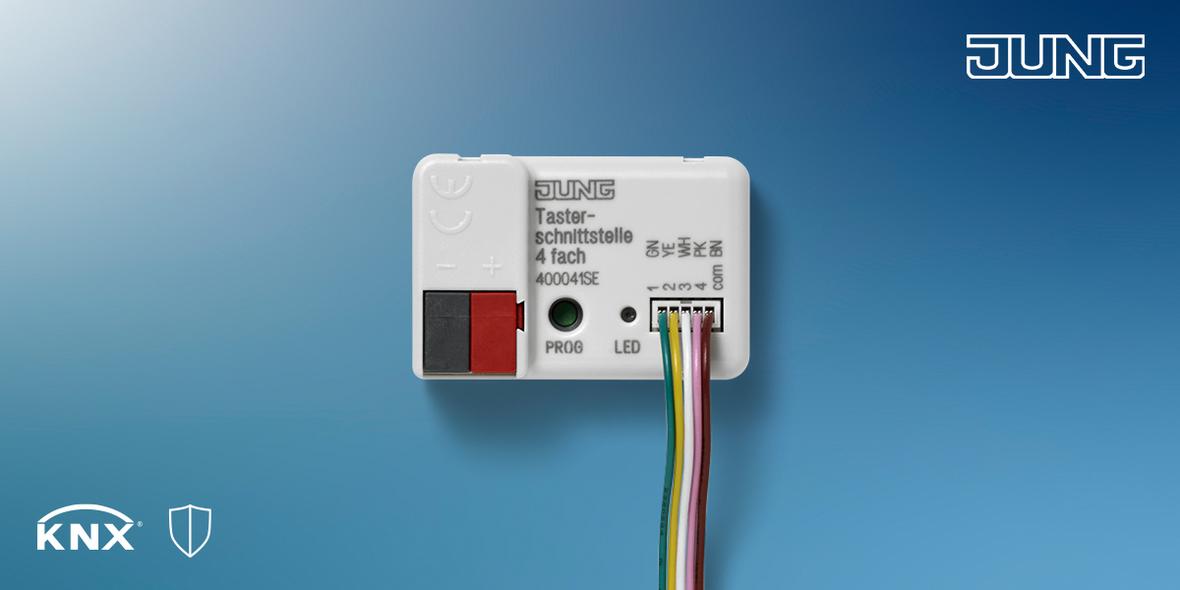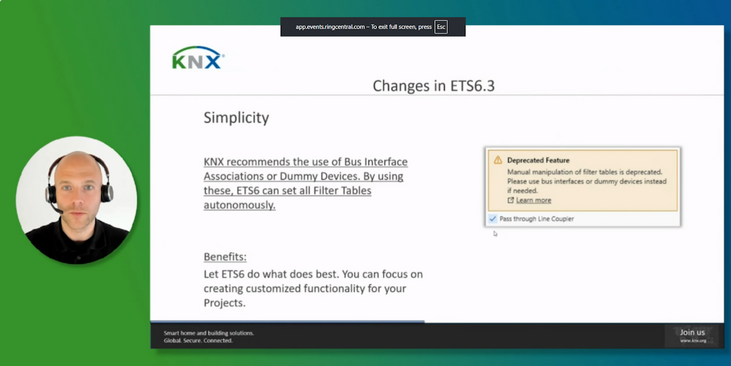13. Dec 2023
JUNG - Integration of various functions

Integration of various
functions
The new KNX push-button interface from JUNG allows the seamless integration of various sensors and switches into a KNX system. This enables more efficient and convenient control of the building functions.
Push-buttons, door/window sensors, hotel card or key switches can be easily integrated into the KNX system via the potential-free contacts. This enables intelligent control of lighting, heating, air conditioning and other electrical devices. Another major advantage of the new push-button interface is its versatility. It supports leakage and condensation sensors as well as temperature sensors and door and window contacts. This allows building owners to increase the security and energy efficiency of their buildings. The push-button interface is available in 2-gang, 4-gang and 8-gang versions.
Three different versions with KNX Secure
With two, four or eight independent channels, each channel can be configured as an input or output. The push-button interface can also send telegrams to the bus based on the read-in status of the push-button/switch. This enables precise and reliable control of the connected devices. Neighbouring input channels can be combined when connecting push-buttons, door or window contacts. This allows complex logic functions to be realised. It is also possible to block individual channels of the push-button interface. This enables targeted control and management of the connected devices. Another advantage of the new push-button interface is its compatibility with KNX Data Secure. This offers a high level of protection against tampering in building automation and can be easily configured via the project planning in the ETS. The devices can be updated and supplied with firmware updates via the JUNG ETS Service App.
Versatile options for setting up the KNX system
· With the new KNX push-button interface, various switch types such as installation switches, push-buttons, reed contacts (door/window contacts), leakage/condensation sensors, temperature sensors, Mini Basic motion detectors, pulse counters and outputs can be integrated into the KNX system.
·
In
a hotel, the KNX push-button interface with the FFNTC temperature sensor can be
used in a variety of ways. For example, it can automatically adjust the room
temperature in hotel rooms and thus offer guests optimum comfort.
· By integrating leakage and condensation sensors into the KNX system, the push-button interface provides reliable monitoring and early warning of moisture and water damage. Measures can then to be taken to minimise damage and ensure the safety of the building.
· By connecting reed contacts to the push-button interface, users can monitor the status of doors and windows.
· The push-button interface has a pulse counter with main and intermediate counters. This enables the precise recording and monitoring of pulses, for example to measure energy consumption or record meter readings.
The new push-button interface provides an optimal solution for integrating sensors and switches into the KNX system. It improves functionality and flexibility and realises the intelligent control of building functions. Building owners benefit from increased security and energy efficiency. Thanks to its compatibility with KNX Data Secure, it is tamper-proof and can be updated via the JUNG ETS Service App.
Highlights
-
 Press
PressETS6 Roadshow 2025 marks global success, showcases power of ETS6.3
ETS6 takes center stage during the month of May with 24 roadshow stops all over the world. -
 News
NewsThe KNX Journal 2025 is now available
The latest edition of our annual smart home and building solutions magazine has arrived. The KNX Journal 2025 offers ... -
 KNXtoday
KNXtoday#KNXis35: KNX history and evolution
KNX is 35. This worldwide building control standard, initiated by a handful of visionary European manufacturers, now has ...
